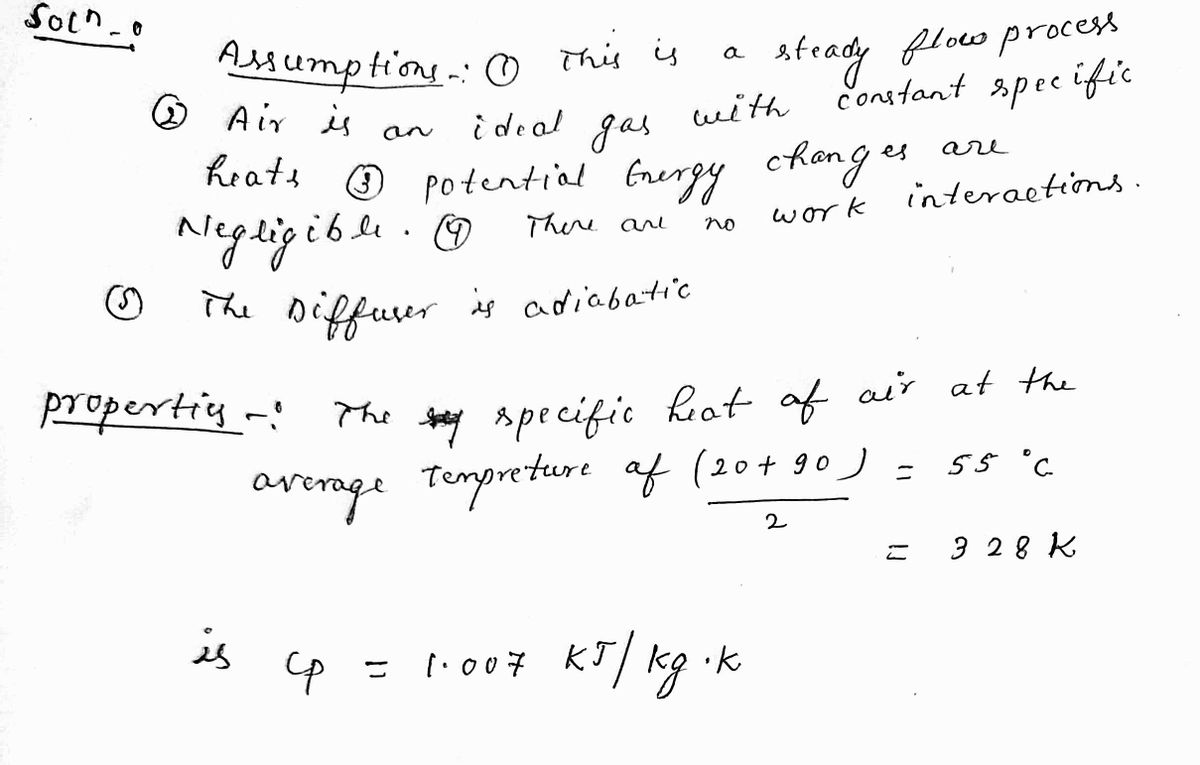4. The diffuser in a jet engine is designed to decrease the kinetic energy of the air entering the engine compressor without any work or heat interactions. Calculate the velocity at the exit of a diffuser when air at 100 kPa and 20°C enters it with a velocity of 500 m/s and the exit state is 200 kPa and 90°C.1
4. The diffuser in a jet engine is designed to decrease the kinetic energy of the air entering the engine compressor without any work or heat interactions. Calculate the velocity at the exit of a diffuser when air at 100 kPa and 20°C enters it with a velocity of 500 m/s and the exit state is 200 kPa and 90°C.1
Related questions
Question

Transcribed Image Text:The diffuser in a jet engine is designed to decrease the kinetic energy of the air entering the engine
compressor without any work or heat interactions. Calculate the velocity at the exit of a diffuser
when air at 100 kPa and 20°C enters it with a velocity of 500 m/s and the exit state is 200 kPa and
4.
90°C.1
Answer: 330.2 m/s
Expert Solution
Step 1

Trending now
This is a popular solution!
Step by step
Solved in 3 steps with 3 images
